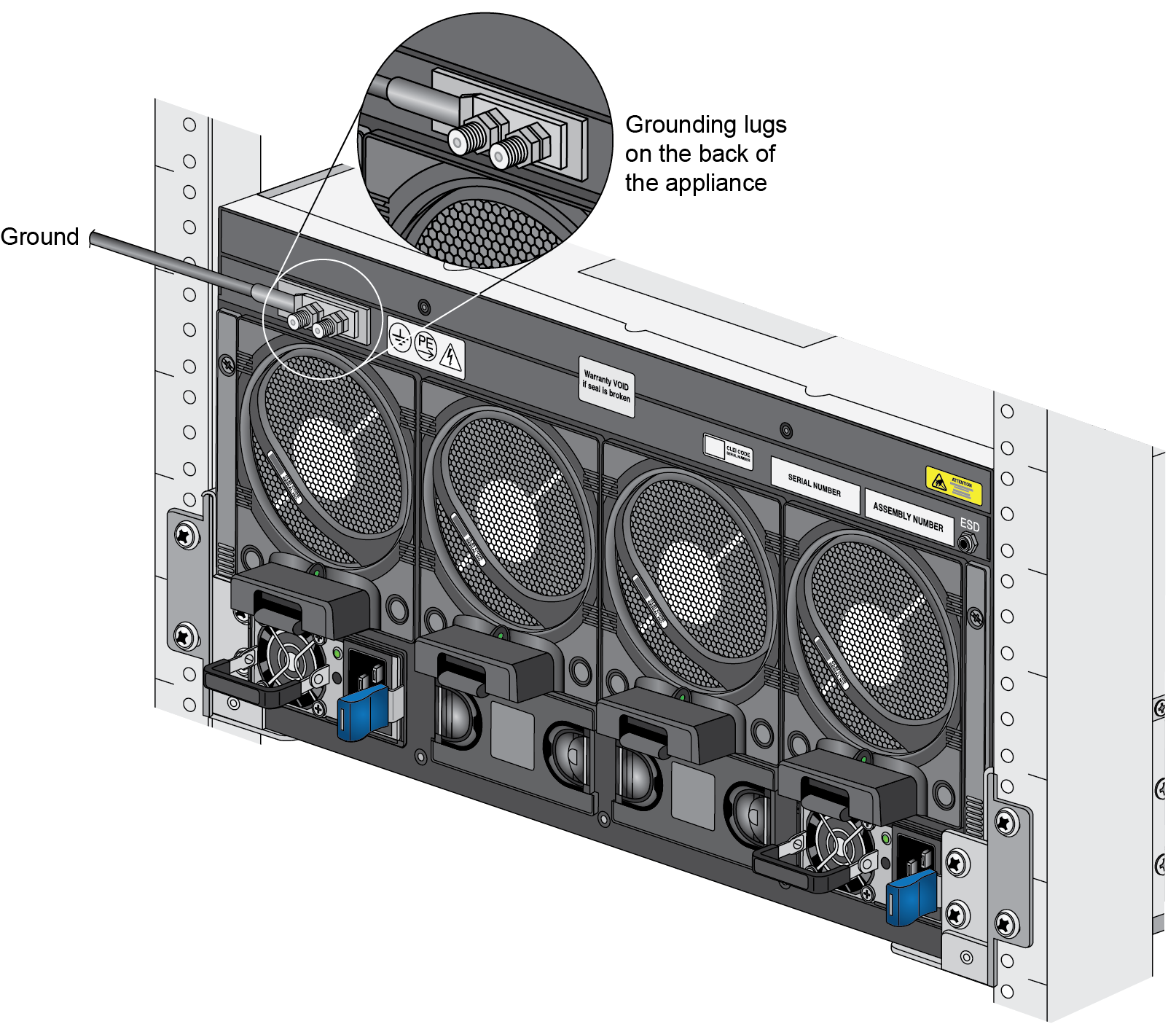Download PDF
Connect AC or DC Power to a PA-5450 Firewall
Table of Contents
Expand all | Collapse all
Connect AC or DC Power to a PA-5450 Firewall
Connect the PA-5450 firewall to an AC or DC power source
depending on your deployment.
The following procedure describes how to connect
power to a PA-5450 firewall with either AC or DC power supplies
installed. The AC power supplies support 100 to 240VAC power input
and the DC power supplies support 48 to 60VDC power input. For details
on power requirements, see Determine PA-5450 Firewall Power Configuration Requirements.
Learn
how to Set Up a Connection to the Firewall based on your desired
boot mode prior to powering on the firewall for the first time.
- Read Determine PA-5450 Firewall Power Configuration Requirements to ensure that you understand the available power options and that you provide enough power to the firewall based on your configuration.Read Product Safety Warnings.Put the provided ESD wrist strap on your wrist ensuring that the metal contact is touching your skin. Then attach (snap) one end of the ground cable to the wrist strap and remove the alligator clip from the banana clip on the other end of the ESD grounding cable. Plug the banana clip end into one of the ESD ports located on the back of the appliance before handling ESD sensitive hardware. For details on the ESD port location, see PA-5450 Back Panel.For DC deployments, ensure that your DC power feed is powered off.Remove the four nuts from the ground studs located on the back of the appliance on the upper left side.
![]() Crimp a 6-AWG wire to the provided grounding lug and connect the other end to your earth ground point.The crimp tool is not included with the appliance. It is recommended that you use a Panduit CT-3001/ST crimp tool for this procedure. Refer to the manufacturer’s specifications for more information.Connect the two-post lug connector to the two-post ground studs on the appliance using the provided nuts and torque each nut to 50 in-lbs. Be careful not to strip the nuts and lug studs.Connect the power supply to a power source based on whether your power supplies are AC or DC.(AC Power Supplies only)
Crimp a 6-AWG wire to the provided grounding lug and connect the other end to your earth ground point.The crimp tool is not included with the appliance. It is recommended that you use a Panduit CT-3001/ST crimp tool for this procedure. Refer to the manufacturer’s specifications for more information.Connect the two-post lug connector to the two-post ground studs on the appliance using the provided nuts and torque each nut to 50 in-lbs. Be careful not to strip the nuts and lug studs.Connect the power supply to a power source based on whether your power supplies are AC or DC.(AC Power Supplies only)- Connect the first two power supplies to a 120VAC 15-amp circuit breaker or 240VAC 20-amp circuit breaker using the provided power cords and then connect the second two power supplies to a second, independent 120VAC 15-amp circuit breaker or 240VAC 20-amp circuit breaker.
![]()
- Secure the power cords to the power inlets using the power cord retainer clips.
(DC Power Supplies only)- Prepare the DC power cable by crimping the bare wire ends of the cables using lugs (not included) designed for your DC power source. Each cable dongle has one red wire and one black wire. Connect the red wire to the DC negative (-48VDC) terminal of your DC power source. Connect the black wire to the DC positive (RTN) terminal of your DC power source. Do this for each of the four power supplies, ensuring that the first two power supplies on the left are connected to one power circuit breaker and the second pair on the right is connected to a different circuit breaker. This ensures power redundancy and allows for planned electrical circuit maintenance.
![]()
- Connect the other ends of the DC cables to the front of the DC power supplies by pushing the plastic connector into the DC power supply until it clicks into place. Ensure that you connect each pair of power supplies to a different circuit breaker.
When cabling the DC power supply to your power source, ensure that you route the cable in such a way that it does not put pressure on the plastic clips located at the front of the DC power supplies. It is best to route the cables first and then plug the cables into the power supplies.Confirm that all front slot cards are properly inserted.After each AC or DC cable is securely connected, turn on the power source and the appliance will power on.Before powering on the firewall, ensure that you have connected your Ethernet cables in accordance to the mode you wish to boot the firewall in (standard mode or Zero Touch Provisioning mode) as specified in Set Up a Connection to the Firewall.



